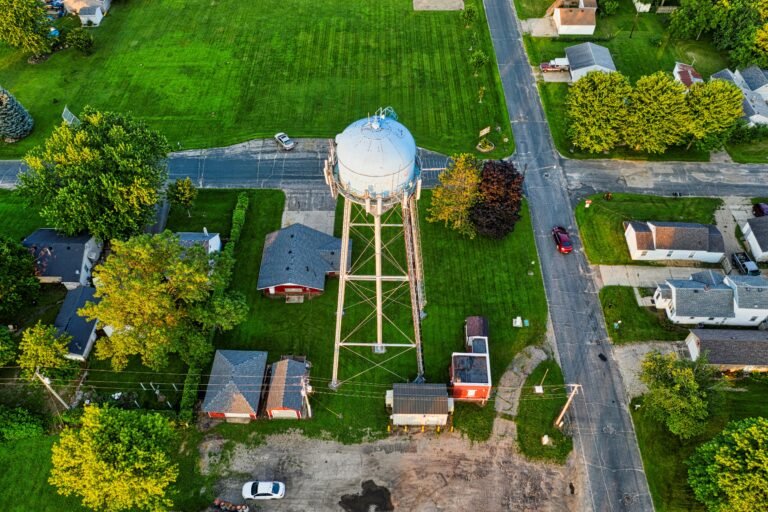Water tanks play a crucial role in ensuring the availability of clean water during emergencies, whether for firefighting, disaster response, or community resilience. However, to function effectively in such situations, water tanks must be regularly inspected and maintained. Water tank inspection services by certified professionals are essential for emergency preparedness, helping identify potential issues before they escalate into failures that could compromise access to critical water supplies.
In this blog, we will explore the role of water tank inspections in emergency preparedness, highlighting key challenges, solutions, and the importance of proactive maintenance.
1. The Importance of Water Tank Inspections
Water tank inspections are vital for ensuring that tanks are in optimal condition to support emergency preparedness efforts. According to the American Water Works Association (AWWA), water tanks are critical infrastructure components that require regular inspections to prevent contamination, structural failures, and operational disruptions. Neglecting these inspections can lead to water supply shortages during emergencies, putting lives and property at risk.
Key Reasons for Regular Inspections:
- Ensuring Water Quality: Inspections help detect and prevent contamination from sediment, bacteria, or chemical reactions within the tank.
- Maintaining Structural Integrity: Regular checks identify issues like corrosion, cracks, or leaks that could weaken the tank’s structure and lead to failures.
- Operational Readiness: Inspections ensure that water tanks are ready to provide an adequate supply during emergencies, such as fires or natural disasters.
2. Common Issues Identified During Inspections
Water tank inspections often reveal common issues that, if left unaddressed, can compromise emergency preparedness. Understanding these issues can help stakeholders take proactive measures to ensure their tanks are always ready for action.
Contamination Risks:
- Sediment Buildup: Over time, sediment can accumulate at the bottom of the tank, leading to reduced water quality and potential clogging of outlets. This buildup can also harbor bacteria or harmful pathogens, risking contamination during emergencies.
- Biofilm Formation: Biofilms are layers of microorganisms that adhere to tank surfaces. If not properly managed, they can lead to water quality degradation, which is particularly concerning during emergencies when clean water is essential.
- Chemical Contamination: Tanks that store treated water may face risks of chemical contamination due to reactions between the tank’s materials and the stored water. This can lead to water discoloration, unpleasant odors, and potential health risks.
Structural and Mechanical Issues:
- Corrosion and Rust: Corrosion, particularly in metal tanks, can weaken the structure over time, leading to leaks or even complete tank failure. Corroded sections may also introduce contaminants into the water.
- Cracks and Leaks: Concrete or fiberglass tanks can develop cracks over time due to shifting foundations, temperature fluctuations, or aging. Leaks not only waste valuable water but also indicate structural weaknesses that can worsen during emergencies.
- Valve and Outlet Failures: Mechanical components like valves and outlets must be in good working order to ensure a reliable water supply during emergencies. Inspections can identify worn-out or malfunctioning parts that need repair or replacement.
3. The Role of Inspections in Emergency Scenarios
Water tank inspection services are not only about maintaining routine operations but also about ensuring tanks are ready to perform under emergency conditions. This readiness can make a significant difference in how communities respond to disasters.
Firefighting Readiness:
- Water tanks are often a primary water source for firefighting, especially in rural or remote areas. Inspections ensure that tanks have the capacity and functionality to provide sufficient water during a fire emergency. According to the National Fire Protection Association (NFPA), reliable access to water is critical in controlling and extinguishing fires, making regular inspections a key component of fire preparedness.
Disaster Response:
- Natural disasters like hurricanes, earthquakes, or floods can disrupt water supplies. Well-maintained water tanks provide an emergency reserve that can be tapped into when the regular water infrastructure is compromised. Inspections ensure that tanks are structurally sound and contamination-free, providing a reliable source of clean water during crises.
Community Resilience:
- In times of crisis, access to clean water is essential for maintaining public health and well-being. Inspected and well-maintained tanks support community resilience by ensuring that water is available for drinking, sanitation, and other critical needs during emergencies.
4. Overcoming Challenges in Water Tank Inspections
While the importance of water tank inspections is clear, challenges often arise in carrying them out effectively. Identifying these challenges and developing strategies to overcome them is crucial for emergency preparedness.
Challenges:
- Access Issues: Tanks located in hard-to-reach areas or those with limited entry points can make thorough inspections difficult.
- Safety Concerns: Inspecting tanks, especially those that are elevated or in confined spaces, can pose safety risks to workers.
- Resource Limitations: Budget constraints or limited access to specialized inspection equipment can hinder regular inspections.
Solutions:
- Utilizing Advanced Technologies: Deploying technologies like drones, robotic inspection tools, and remote sensing equipment can enhance inspection capabilities, particularly in hard-to-access areas. These tools can provide high-resolution images and real-time data without putting workers at risk.
- Implementing Routine Inspection Schedules: Establishing a routine inspection schedule ensures that tanks are regularly checked and maintained. The AWWA recommends annual inspections, with more frequent checks for high-use or critical tanks.
- Training and Certification: Ensuring that inspection personnel are properly trained and certified in water tank inspection standards and safety protocols is essential for effective inspections and emergency preparedness.
Conclusion
Water tank inspections play a pivotal role in emergency preparedness by ensuring the availability of clean and safe water during crises. By addressing common issues such as contamination, corrosion, and structural integrity through regular inspections, communities can enhance their resilience and readiness for emergencies. Overcoming the challenges of inspections with advanced technologies and proactive maintenance strategies ensures that water tanks are always prepared to support firefighting efforts, disaster response, and public health during critical times.
